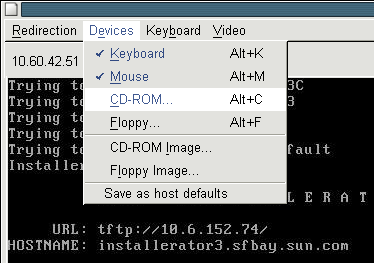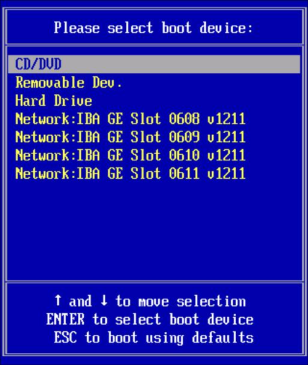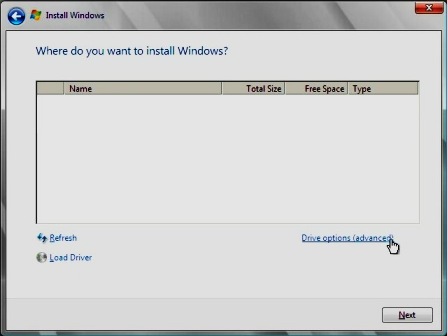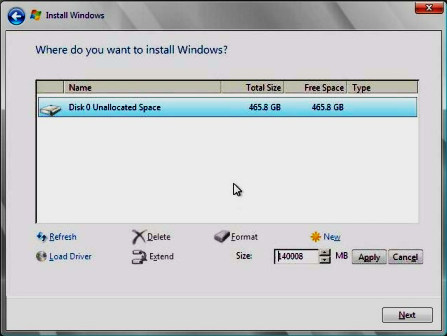| Skip Navigation Links | |
| Exit Print View | |

|
Sun Server X2-8 (formerly Sun Fire X4800 M2) Installation Guide for Windows Operating Systems Sun Server X2-8 (formerly Sun Fire X4800 M2) Documentation Library |
| Skip Navigation Links | |
| Exit Print View | |

|
Sun Server X2-8 (formerly Sun Fire X4800 M2) Installation Guide for Windows Operating Systems Sun Server X2-8 (formerly Sun Fire X4800 M2) Documentation Library |
Windows Server OS Installation Planning
Windows Server Installation Methods
Preparing For Windows OS Installation
Supported Windows Operating Systems
Windows Server Installation Considerations
Selecting a Windows OS Media Delivery Method
Oracle Hardware Installation Assistant (OHIA)
How to Download Server Software
How to Set Up an Oracle ILOM Remote Console
How to Install Windows Server 2012
How to Install Windows Server 2008 Using PXE
How to Install Windows Server 2012 Using PXE
Updating Critical Drivers and Installing Supplemental Software
Installing Critical Device Drivers
Installing Supplemental Software
Managing RAID Using the MegaRAID Storage Manager
Configuring Support for the Trusted Platform Module
Incorporating Windows Server 2008 Device Drivers Into WIM Images for WDS
Location of Device Drivers on Tools and Drivers DVD
Device Drivers to Incorporate Into WIM Images
Prerequisites and Task Overview for the Device Driver WIM Images
Incorporating Drivers Into the WIM Image
Downloading the ISO Image for the Tools and Drivers DVD
Identifying Network Interfaces in Windows
How to Determine the Server's Active Network Data Ports
How to Confirm Physical Port MAC Addresses and Map Them to Windows Device Names
Before You Begin
Before beginning the operating system installation, make sure that the following requirements are met:
If you want to configure your boot drive for RAID 1 (mirroring), you need to do so using the LSI Logic integrated RAID controller’s setup utility (accessible by pressing Ctrl-C when prompted during server boot) before you install the Windows operating system. For more details, refer to the Sun LSI 106x RAID User’s Guide.
For your chosen Windows media delivery method, refer to the following requirements table.
|
If you select CD-ROM image, you are prompted to browse for the image file.

If you are using the Windows Remote method, you can power cycle the server using Oracle ILOM.
The BIOS POST process begins.
Look for the Initializing USB ... Done message on the screen.

Note - BIOS POST messages can go by quickly, and you might miss them. If you miss the prompt, power cycle the server again, and hold down the F2 key during boot until the BIOS setup utility appears.
After the Press F2 to run setup prompt appears, press F2. The BIOS Setup Utility opens.

The BBS POPUP menu allows you to select a boot device.
Note - BIOS POST messages, including the prompt for the BBS Popup menu, can go by quickly, and you might miss them. If you do, power cycle the server and hold down the F8 key during boot until the BBS Popup menu (shown in Step 1) appears.

If you have selected the Windows Local installation method, insert the Windows media DVD into the connected DVD drive now.

If prompted with Press any key to boot from CD, quickly press any key.
The Windows installation wizard starts.

The Where to Install Windows screen appears.
To select the Windows default partition settings: Click Next. Proceed to Step 10.
To override the Windows default partition settings: Click Driver Options (advanced) and proceed to the Advanced Driver Options screen in step 9.

 | Caution - Formatting or re-partitioning a pre-existing partition destroys all data on the partition. |
The Advanced Driver Options screen appears.

Note - Windows Server 2008 R2 enforces password schemes for user accounts. Password standards include restrictions on length, complexity, and history. If you need more details, click the Accessibility link on the account creation screen.
After you have created your initial account, the Windows Server 2008 desktop appears. The Windows Server 2008 R2 interface is new; review the Microsoft documentation to familiarize yourself with the changes.
See Also
Updating Critical Drivers and Installing Supplemental Software